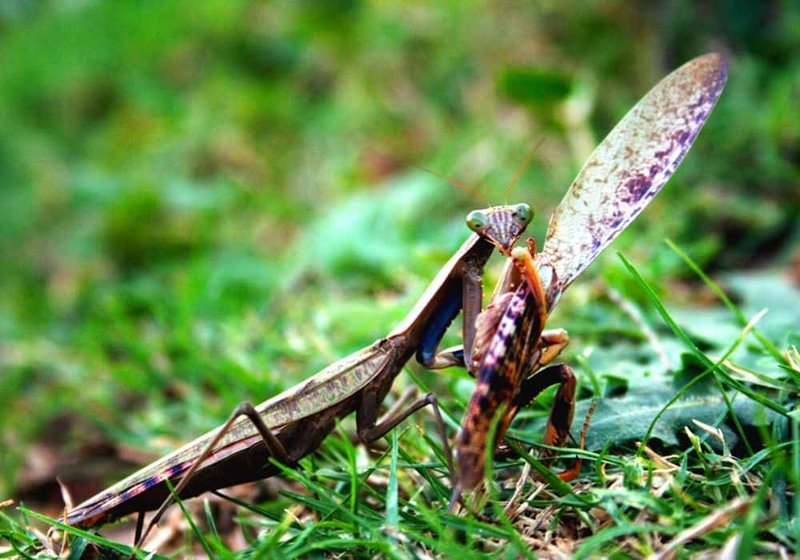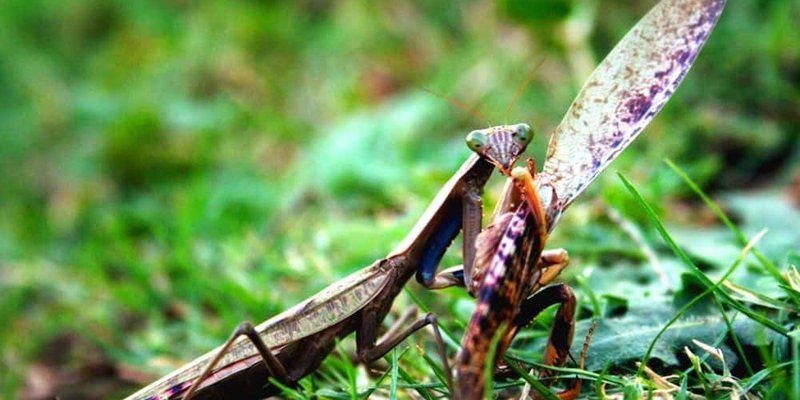
In different cultures, the mantid symbolizes everything from patience and stillness to insight and intuition. Just like how we might think about the roles of other animals in our lives, the mantid has its own narrative that speaks to those who take the time to notice. Let’s embark on a journey to explore how this insect has woven itself into the fabric of human culture!
The Graceful Nature of the Mantid
When you first encounter a mantid, you might be struck by its poise and elegance. They have a way of moving that seems almost deliberate, as if they’re performing a dance. In many cultures, this graceful movement is seen as a symbol of patience and calmness. Picture a person being asked to sit still in a bustling café; the mantid embodies that ability to be centered and present, making it a symbol of mindfulness.
In the natural world, mantids are expert hunters. They wait patiently for their prey to come close before striking with remarkable precision. This has led to the interpretation of the mantid as a figure of strategic thinking and focus. Just as we might set our sights on a goal, the mantid teaches us the value of being still and waiting for the right moment.
Spiritual Significance Across Cultures
Various cultures have viewed the mantid as a spiritually significant creature. In some Native American traditions, the mantis is seen as a messenger or guide. It’s believed that when you spot one, it could be a sign to tune into your inner voice and listen to your intuition. Have you ever had a moment where you felt a sudden clarity about something? That’s the kind of insight the mantid represents.
In Ancient Egypt, the mantid was often associated with the goddess of fertility and protection. This divine connection highlights how this insect has been perceived not just as an animal, but as a being that carries profound meaning and symbolism. It’s a reminder that nature often reflects our inner thoughts and feelings, bridging the gap between the material and the spiritual.
The Mantid in Art and Literature
Throughout history, the mantid has served as a muse for artists and writers alike. Its unique shape, with long limbs and striking features, captures the imagination. You might find mantids depicted in paintings or sculptures that represent themes of tranquility or transformation.
For example, in Japanese art, mantids can symbolize the beauty of nature and serve as a reminder of the fleeting moments of life. Artists often draw parallels between the mantid’s life cycle and human experiences, emphasizing the elegance of change. Just like a story unfolding, the mantid’s life can inspire reflection on our own journeys.
Practices and Rituals Involving Mantids
In various cultures, rituals have been developed that involve the mantid as a central figure. Some communities might host ceremonies that honor this insect, celebrating its role in the ecosystem and its symbolic meanings. There are even practices where people meditate or set intentions while watching the movements of a mantid, seeking guidance and clarity.
It’s interesting to consider how our connection to animals, like the mantid, can deepen our understanding of ourselves and our surroundings. These rituals often encourage us to slow down and appreciate the small details in life, much like how the mantid moves with purpose.
Why Understanding Mantid Symbolism Matters
You might be wondering why it’s essential to delve into the cultural symbolism of the mantid and, honestly, there are several reasons. Understanding these meanings can help us connect with nature on a deeper level. It invites us to appreciate the interconnectedness of life and how every creature, big or small, has its role to play.
Moreover, learning about mantids can serve as a powerful reminder of the need for patience and mindfulness in our daily lives. In a world that often feels rushed and chaotic, taking a moment to reflect on the mantid’s calm presence can inspire us to find stillness amidst the noise.
The Mantid’s Role in Ecosystems and Biodiversity
Beyond their cultural significance, mantids play an essential role in ecosystems as predators. By controlling pest populations, they help maintain balance in nature. This ecological role also ties back to their cultural symbolism; they represent the importance of harmony and balance, both in the environment and within ourselves.
Preserving biodiversity, including mantids, is crucial as it impacts everything from food systems to climate resilience. By understanding their symbolic meaning, we can foster greater respect for all creatures and the ecosystems they inhabit.
The cultural symbolism of the mantid is not just a collection of stories or beliefs; it’s a rich tapestry that weaves together art, spirituality, and ecology. By embracing these interpretations, we can gain deeper insights into our own lives and our connection to the world around us. Whether you spot a mantid in your garden or read about it in a book, remember that it carries messages of patience, intuition, and harmony.
Next time you see a mantid, take a moment to reflect on what it represents. It might just inspire you to slow down, listen to your inner self, and appreciate the beauty of the present moment.

